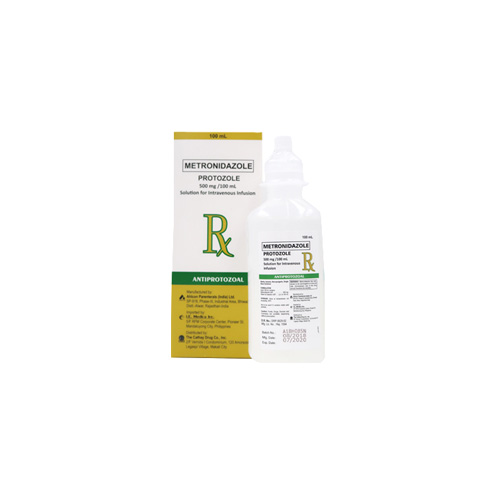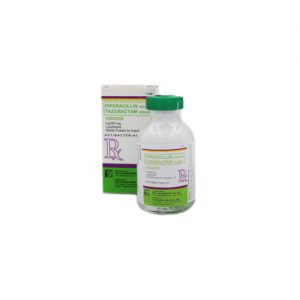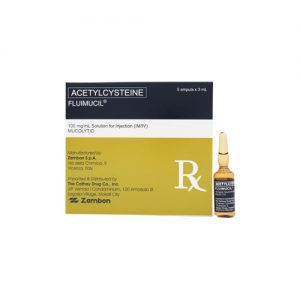Description
FORMULATION
Each 100 mL contains:
Metronidazole USP………………………………… 500 mg
Water for Injection BP ……………………………… q.s.
PHARMACOLOGICAL ACTION
Metronidazole is a nitroimidazole with antiprotozoal and antibacterial actions. It is highly effective against Trichomonas vaginalis, Entamoeba histolytica and Giardia lamlia. Metronidazole has bactericidal activity against pathogenic anaerobic bacteria, particularly Bacteroides species and Fusobacterium spp.
In the presence of mixed flora (both aerobes and anaerobes) metronidazole acts synergistically with antibiotics effective against common aerobic pathogens. Metronidazole alone has no direct activity against aerobes and facultative anaerobes.
MECHANISM OF ACTION
Metronidazole is a prodrug. Unionized metronidazole is selective for anaerobic bacteria due to their ability to intracellularly reduce metronidazole to its active form. This reduced metronidazole then covalently binds to DNA, disrupt its helical structure, inhibiting bacterial nucleic acid synthesis and resulting in bacterial cell death.
PHARMACOKINETIC PROPERTIES
Following an intravenous infusion (over 20 minutes) of 500 mg Metronidazole in patients with anaerobic infections, serum concentrations achieved were 35.2 mcg/mL at 1 hour, 33.9 mcg/mL at 4 hours and 25.7 mcg/mL at 8 hours.
The half-life following a single intravenous dose is 6 – 7 hours. Metronidazole is only slightly bound to plasma proteins. It readily penetrates tissues and has a large apparent volume of distribution equivalent to over 70-95% body weight. It attains bactericidal concentrations on most tissues and body fluids including brain, CSF, abscess, cavities, saliva, bile, vaginal secretions, amniotic fluid and breast milk.
Metabolism and Excretion
Metronidazole is eliminated in man largely by metabolism resulting from side-chain oxidation, hydroxylation or conjugation of the parent compound. The major metabolic product is 1-(2-hydroxyehtly)-2-hydroxymethyl-5-nitroimidazole which along with its glucoronide accounts for 40% to 50% of recovered urinary material. The acid and alcohol metabolites of metronidazole are 50% and 30% as active metabolite.
Over a period of 24 hours urinary recovery of total nitro derivatives accounts for 35% to 65%. Renal clearance is 10.2 mL per min/1.75 sq.m. after intravenous administration of a low dose, 63% of the total dose is excreted in the urine and 6.2% in the feces over a 3-day period. In patients with a normal biliary tract, the concentration of metronidazole in gall bladder bile after an intravenous dose of 500 mg is significantly higher than in serum.
Influence of Disease on Kinetics
Accumulation of metronidazole has been demonstrated in serum after continual doses in a patient with impaired renal function. Therefore dosage frequency must be reduced in patients with severe renal insufficiency.
INDICATIONS
Metronidazole is an isotonic formulation composed of superior grade injectable metronidazole for intravenous administration in susceptible life threatening infections.
It is particularly suited for patients who cannot retain oral medication and for patients for whom desired serum concentrations have to be attained rapidly and reliably.
Metronidazole is thus indicated for
- Treatment of infections caused by Bacteroides fragilis and other species of Bacteroides like Fusobacteria, Eubacteria and Anaerobic cocci such as:
- Intra-abdominal infections – appendicitis, cholecystitis, peritonitis, liver abscess and post-operative wound infection
- Gynaecological and obstetrical infections – puerperal sepsis, pelvic cellulitis, pelvic peritonitis
- Respiratory infections – necrotizing pneumonia, empyema, lung abscess
- Central nervous system infections – meningitis, brain abscess
- Miscellaneous infections – septicaemia, gas gangrene, osteomyelitis.
- Prevention of post operative infections due to anaerobic bacteria
- Treatment of amebic abscess of the liver and in moribund or toxic cases of fulminating intestinal infection
DOSAGE AND ADMINISTRATION
Adults and children over 12 years of age
500 mg (100 mL) infused over a period of 20 minutes at a rate 5 mL/minute, repeated 8 hourly.
Children below 12 years of age
Depending upon clinical and bacteriological assessment, the physician may decide the duration of treatment. Depending on the weight of the child the volume of fluid to be infused should be determined on the basis of 7.5 mg/kg. The rate of infusion as well as the frequency remains the same as in adults: 20 minutes at the rate of 5 mL/min repeated 8 hourly. Oral medication should be substituted as soon as this becomes feasible (200 – 400 mg three times daily) or as prescribed by the physician.
ADVERSE EFFECTS
Adverse effects have seldom been reported in patients treated with intravenous metronidazole. Further studies are needed to determine the frequency and nature of adverse effects likely to be encountered with higher dosage and greater duration of metronidazole treatment, sometimes necessary for the treatment of severe anaerobic infections. Adverse effects which occur commonly with dosages of metronidazole used to treat trichomoniasis and amoebiasis, have included anorexia, nausea, abdominal pain, vomiting, vertigo, tiredness and dark coloration of the urine.
Less commonly reported side effects have included ataxia, headache, transient and reversible neutropenia, metallic taste, vaginal and urethral burning, gastric irritation, diarrhea, furred tongue and peripheral neuropathy have been noted to occur in patients on IV metronidazole for anaerobic infection. Transient epileptiform seizures have been reported in a few patients undergoing intensive high dosage metronidazole treatment for radiosensitization.
CONTRAINDICATIONS
Hypersensitivity to metronidazole. Patients with blood dyscrasias or with active disease of the central nervous system.
PRECAUTIONS
As metronidazole is excreted in relatively high concentration in human breast milk, its use should be avoided in nursing mothers. It should be avoided, if possible, during the first trimester of pregnancy, for its effects on fetal development are not definitely known. Being a ‘nitroimidazole’ derivative, moderate leucopenia has been reported in some patients. It is advisable to carry out total differential leucocyte count before, during and after treatment in patients requiring long term metronidazole therapy.
WARNING
Metronidazole has been shown to be carcinogenic in mice and rats. Unnecessary use of the drug should therefore be avoided.
Even invisible damage to container caused during transit, storage or handling may result in contamination. Do not use if container is found leaking upon squeezing or solution is not clear. Solutions containing visible solid particles must not be used.
Admixture of 10.0% Glucose, Penillin G, Potassium and Ringer Lactate Solution to Metronidazole is contraindicated because of chemical incompatibility.
DRUG INTERACTIONS
Clinically significant interaction between metronidazole and warfarin has been reported. Metronidazole has been found to increase prothrombin time. It is preferable to discontinue oral anticoagulants 24 hours prior to administration of Metronidazole.
Simultaneous administration of metronidazole and disulfiram has been reported to cause acute psychosis and confusional state.
It is advised to avoid mixing I.V. infusions of different drugs in keeping with this rule: Metronidazole should not be mixed with any other drug.
DIRECTION FOR USE
- Do not use if leaks are found and return for replacement
- Bring the injection bottle to room temperature or preferably to 37°C just before use.
- Clean the spout of injection bottle with surgical spirit.
- Keep the bottle on a table or on a hard surface and insert the cannula of the sterile infusion set into the spout of injection bottle (Note: the cannula of the infusion set should be inserted fully and not half way into the spout of the Metronidazole bottle to avoid leakage).
- For administration, hold the bottle upside down.
- Inject intravenously slowly at a rate of about 5 mL/min.
- To admit air, insert a sterile injection cannula on the top of the inbverted bottle anywhere above the level of the liquid.
STORAGE
Store at temperatures not exceeding 30°C. Do not freeze.
AVAILABILITY
Metronidazole (PROTOZOLE) is available in 100 mL Plastic container.
CAUTION
Foods, Drugs, Devices and Cosmetics Act prohibits dispensing without prescription
Manufactured by
CLARIS LIFESCIENCES LIMITED
Chacharwadi-Vasana
Ahmedabad-382 213, India
Imported by:
Claris Lifesciences Philippines, Inc.
1108, 11th Floor, Cityland Herrera Tower
98, V.A. Rufino Street Cor. Valero Street
Salcedo Village, Makati City, Philippines
Distributed by
THE CATHAY DRUG CO., INC.
2/F Vernida 1 Condominium
120 Amosolo St., Legaspi Village, Makati City






Reviews
There are no reviews yet.